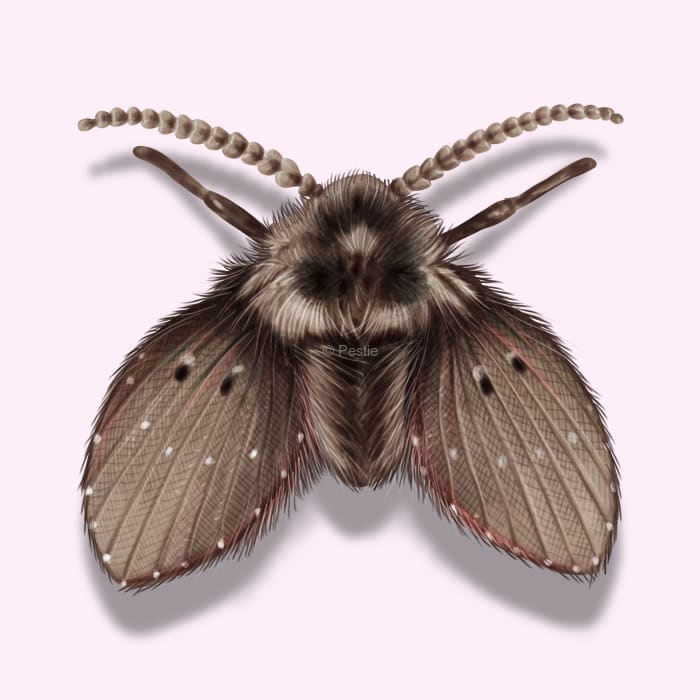How to identify and get rid of drain flies

Evicting drain flies from your sink… for good
Finding a swarm of flies hovering above your sink can often be unnerving. Where are they coming from?
Maybe you’ve cleaned up all the spills, put away the fruit bowl, and disinfected the whole kitchen, but those pesky flies are still hanging around! What gives! If you have small, dark-colored flies in and around your sink, then you might have issues with drain flies.
Drain fly maggots love the slimy gunk at the bottom of your sink drains and can quickly become a nuisance in your kitchen or bathroom if they aren’t taken care of.
How to identify drain flies
Drain flies are best identified when they land, where you’ll be able to see their resemblance to tiny moths. However, they are flies, not moths! They will appear fuzzy and hairy at the base of their wings and they typically hold their wings at an angle.
How big are drain flies?
These little guys are only 1/8-1/6 inch long.
Where do drain flies live?
Drain flies are found all over the world and lay their eggs in the slime and muck of sewage drains, sinks, and wet compost. The larvae live in the layer of gelatinous film that forms in the sludge and are resistant to harsh conditions. They feed on the decaying organic matter and bacterial films in their moist habitat.
Sinks and drains in kitchens, bathrooms, and basements are ideal places for drain flies to breed. You may also find them in window areas with excessive moisture.
How to get rid of drain flies
The best way to get rid of drain flies is to remove the breeding site for drain fly larvae. They can quickly grow into adult flies and lay eggs again within a few weeks.
While it may seem like a drain cleaner would be the best solution to remove the gunk in your drain, in reality, drain fly larvae may be able to survive through the drain cleaning treatment. Other alternative solutions like bleach aren’t effective either as some larvae can be resistant to the effects of bleach.
If you suspect that drain flies are coming from a particular drain, one simple trick to monitor the situation is to put a clear plastic contain over the opening of the drain. You should be able to see adult flies emerging from the drain.
Once you have identified where the flies might be coming from, you can use a product like Pestie to treat areas where they frequently land. This can include around windows, in indoor potted plants, or near your trash can. Keep in mind that you should never treat counters or other places where you do food prep. If you still have questions about where to treat, our team of bug experts can give you custom treatment tips based on your home.
Treat drain flies with Pestie
If you're still having trouble keeping drain flies away, the best option is to use a pro-grade, effective pest control solution like Pestie.
Pestie is a do-it-yourself pest control solution that's specially designed to keep drain flies and other pests away from your home.
With Pestie, you can rest easy knowing that your living space is protected and free of creepy crawlies. And the best part? It's designed for people, pets, and the planet, so you can say goodbye to harsh chemicals and hello to peace of mind!
- Save hundreds compared to traditional annual pest plans
- People, pet, and planet-friendly
- Pro-grade customized formulas
Quick facts
- Scientific name
Family - Psychodidae
- Other common names
Sewer Flies, Moth Flies, Sink Flies, Sewer Gnats
- Colors
Light gray or tan
- Life span
2 weeks
- Diet
Organic material, sewage, drain scum
How dangerous are Drain Flies?
Low danger risk
Drain flies are harmless flies that are more of a nuisance than a health concern. However, they are an indicator of poorly draining pipes and have been known to trigger asthmatic attacks in susceptible individuals.
If drain fly larvae don’t have enough to eat, they may end up eating each other!








